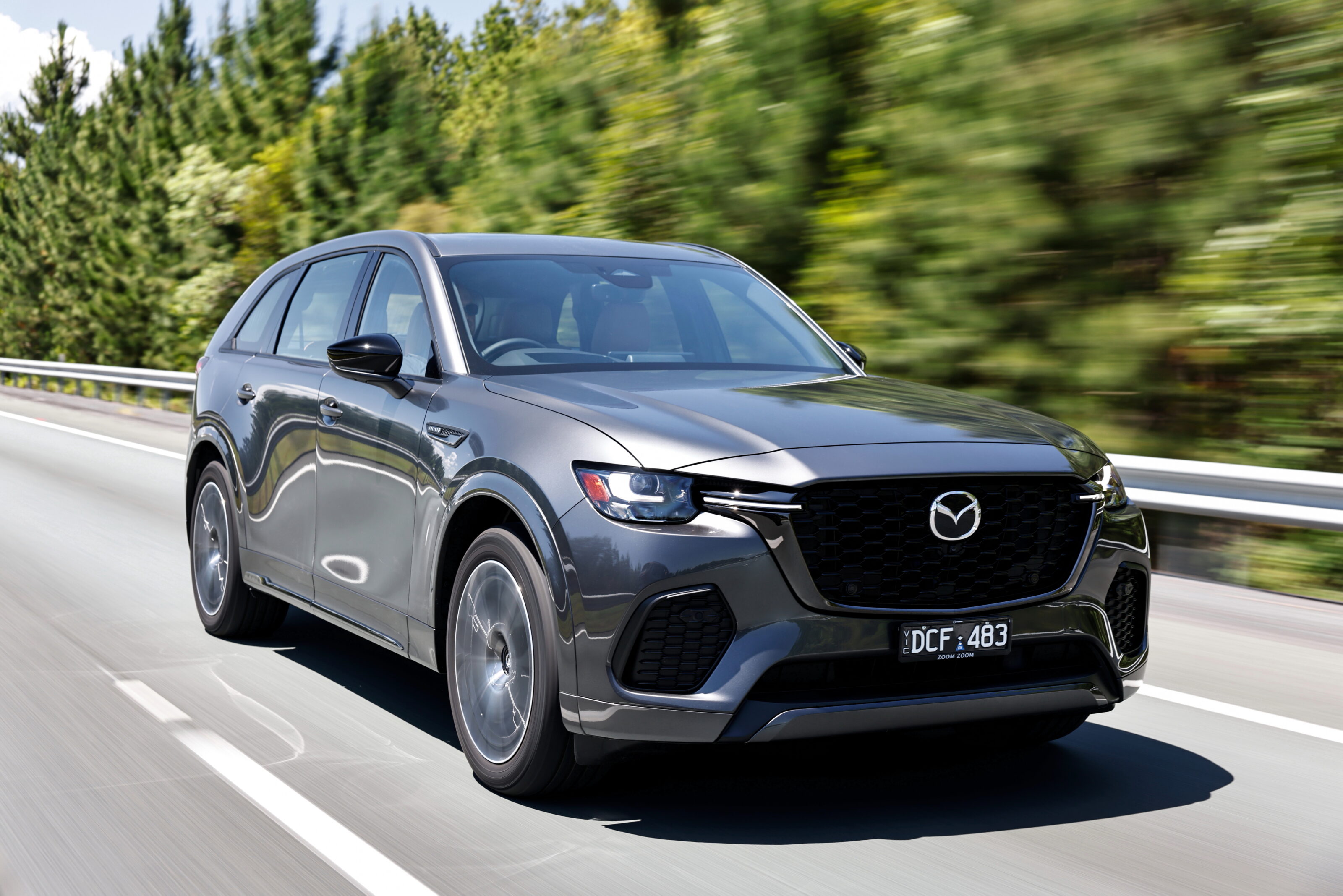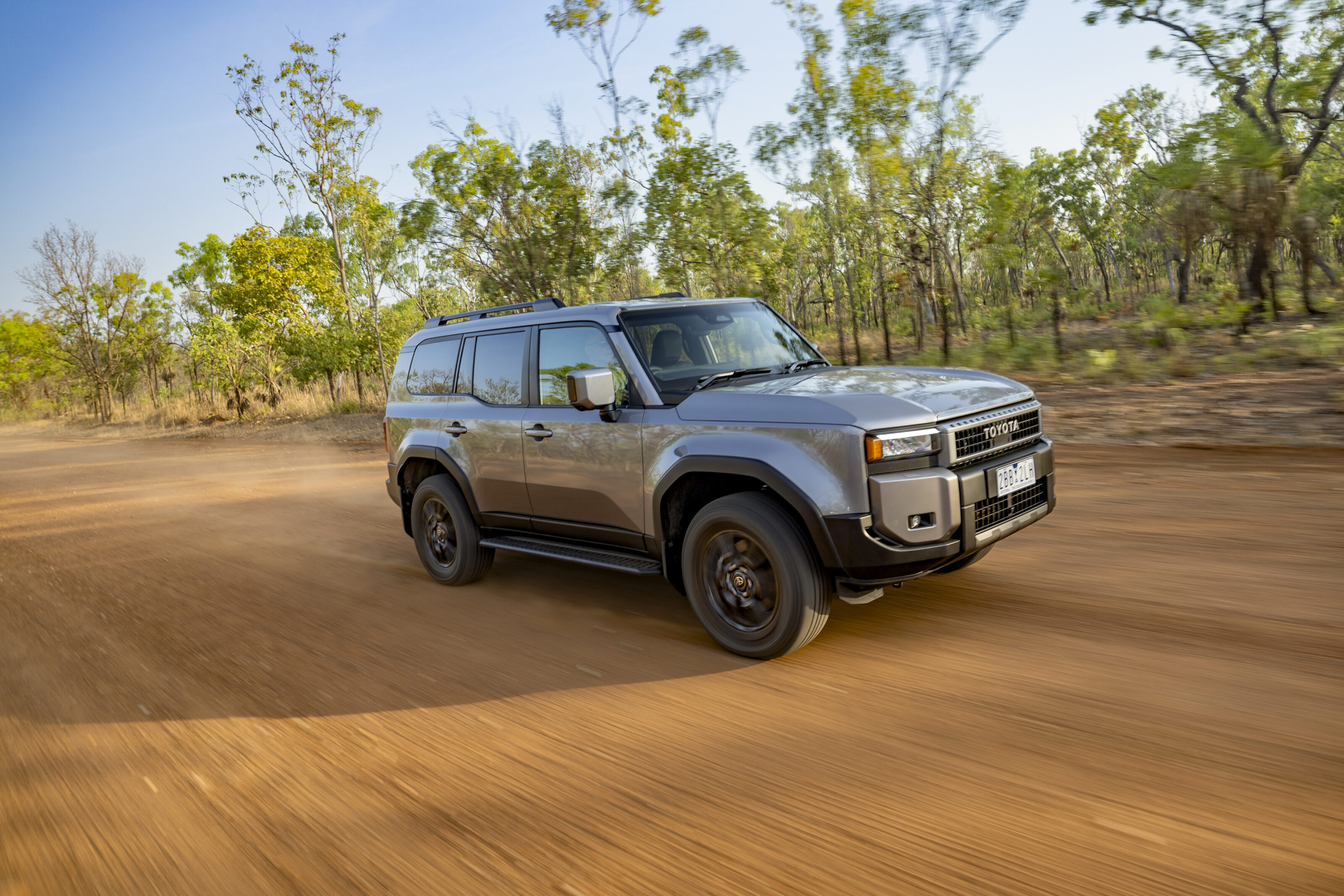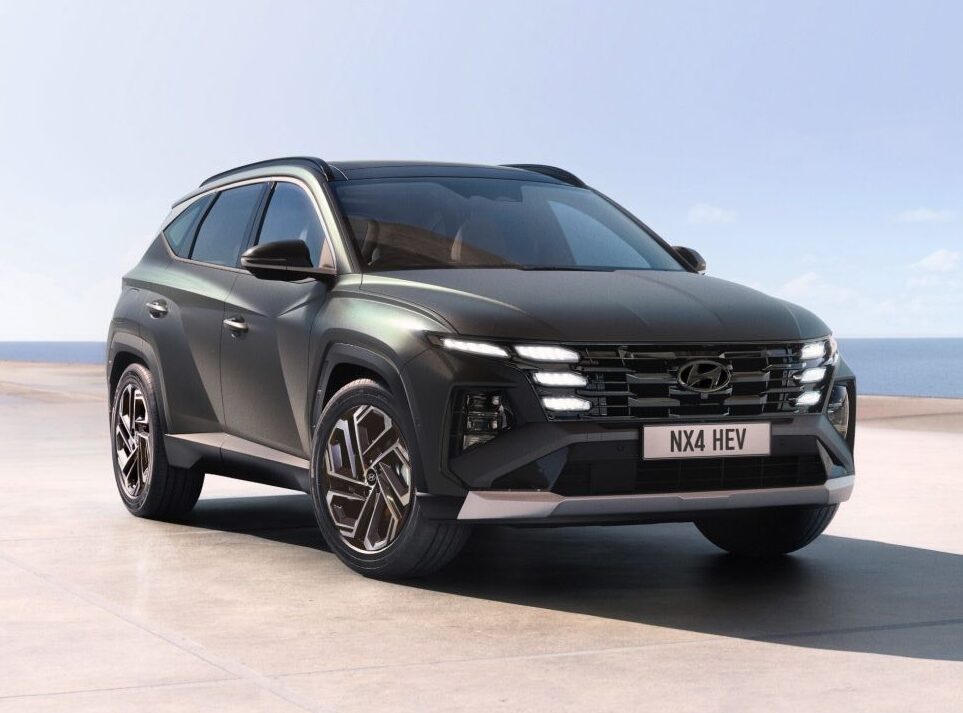Cards on table time. I loved the old Mercedes-AMG GT, especially the later, racier versions. They delivered a huge serving of charisma, demanded to be driven, and were never shy about reminding you exactly how they wanted to be driven. If you wanted something passive or low-involvement, go shopping elsewhere.
The all-new AMG GT caused a little trepidation. Looking at the headline stats, it’d be a reasonable assumption that it has gone a little bit soft. It rides on the platform of the new SL, it’s now a 2+2 rather than a strict two seater, drive goes to all four wheels rather than just the rears, weight has crept up by 248kg and that extreme cab-back, long bonnet look of its predecessor has transformed into something a little more mainstream.
Ask AMG and they’ll tell you that they are listening to customers and delivering what they want: something more everyday useable but which is still imbued with some old-school values.
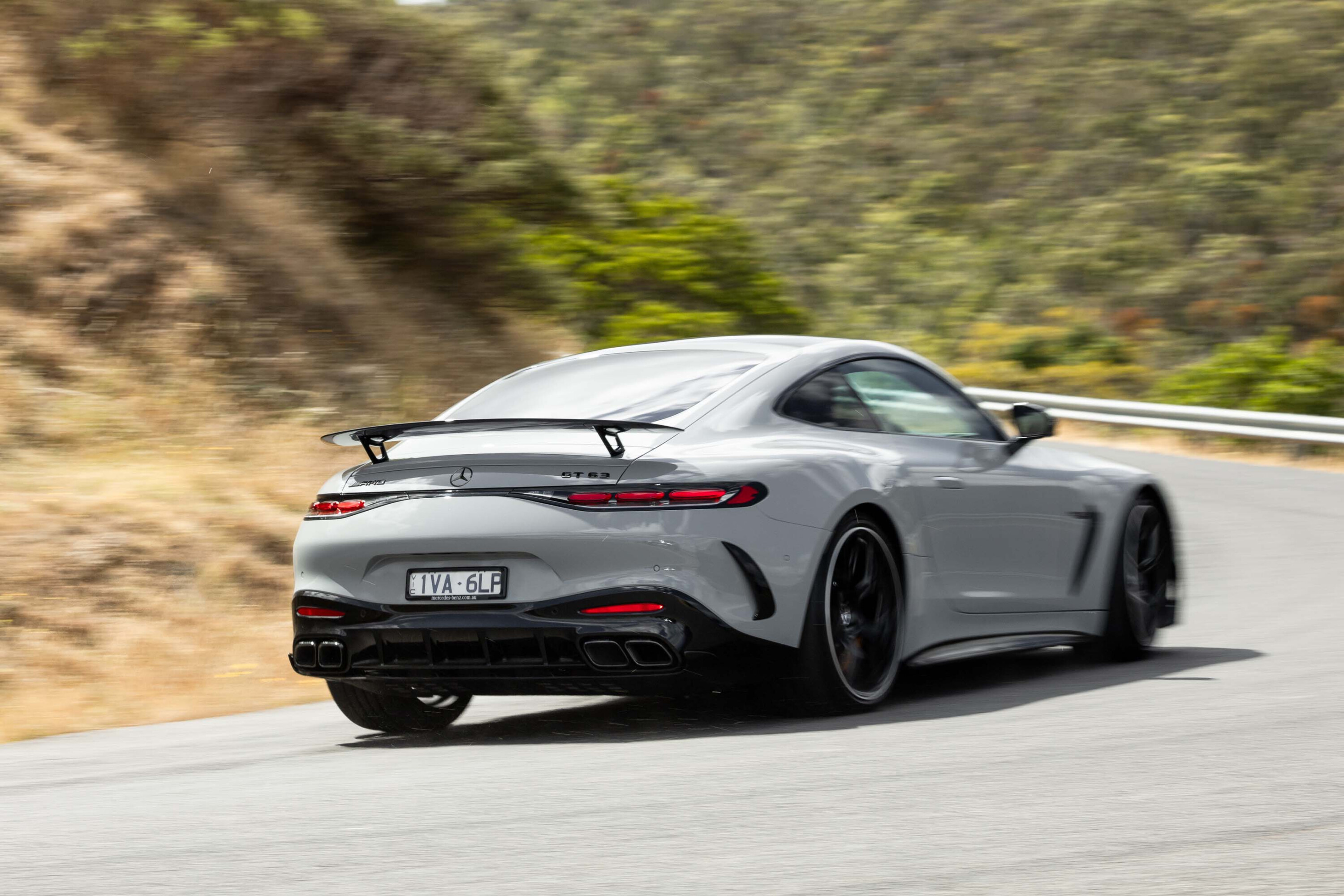
That’s why there’s still a thundering 430kW/800Nm V8 under the bonnet. No downsized two-litre four-pot here. In other markets you can get a rear-drive AMG GT 43 with that powerplant, but there are no plans to bring it to Australia at this stage.
Walk around the new car and it carries these newfound compromises well. Yes, the glasshouse is a little taller, but if anything it’s even more voluptuous than what went before. The tape says that it’s 17cm longer, 4.6cm wider and 6.6cm taller, so although it seems a less intimidating shape, it is a bigger car.
It pays to remind yourself that this is, for Australia at least, the base model, equipped as it is with swollen rear guards that are stretched and teased over the big 305/30 ZR21 rear Michelin Pilot Sport S5 tyres. This rubberware is the key differentiator in performance between this car and the identically-powered SL, which runs on a less focused but still all-round capable Pilot Sport 4S.

The overhangs are tightly drawn too, and there are some neat details such as the subtle exterior brightwork that serves to visually elongate the car and the beefy pop-out door handles. It’s a more complex, sophisticated shape that what went before, and after it’s bedded in on your eye, it’s one of genuine subtlety. Beauty? I’ll let you decide on that one.
Drop into the AMG GT and it doesn’t feel anything but a Mercedes, despite the similarity of the rear to the Porsche 911. Some have carped at the inclusion of the huge 11.9-inch portrait-oriented screen which dominates the real estate in the centre of the cabin, but I have no great issue with it.
The controls within are, for the most part, sensibly resolved and it’s not as if Mercedes has compensated by lowering the carat count of the rest of the interior jewellery. The only ergonomic glitch is the position of the starter button on the left-hand side of the steering column which is awkwardly located behind the wheel and the edge of the screen. With time, you get used to ducking your hand up and under to give it a prod.
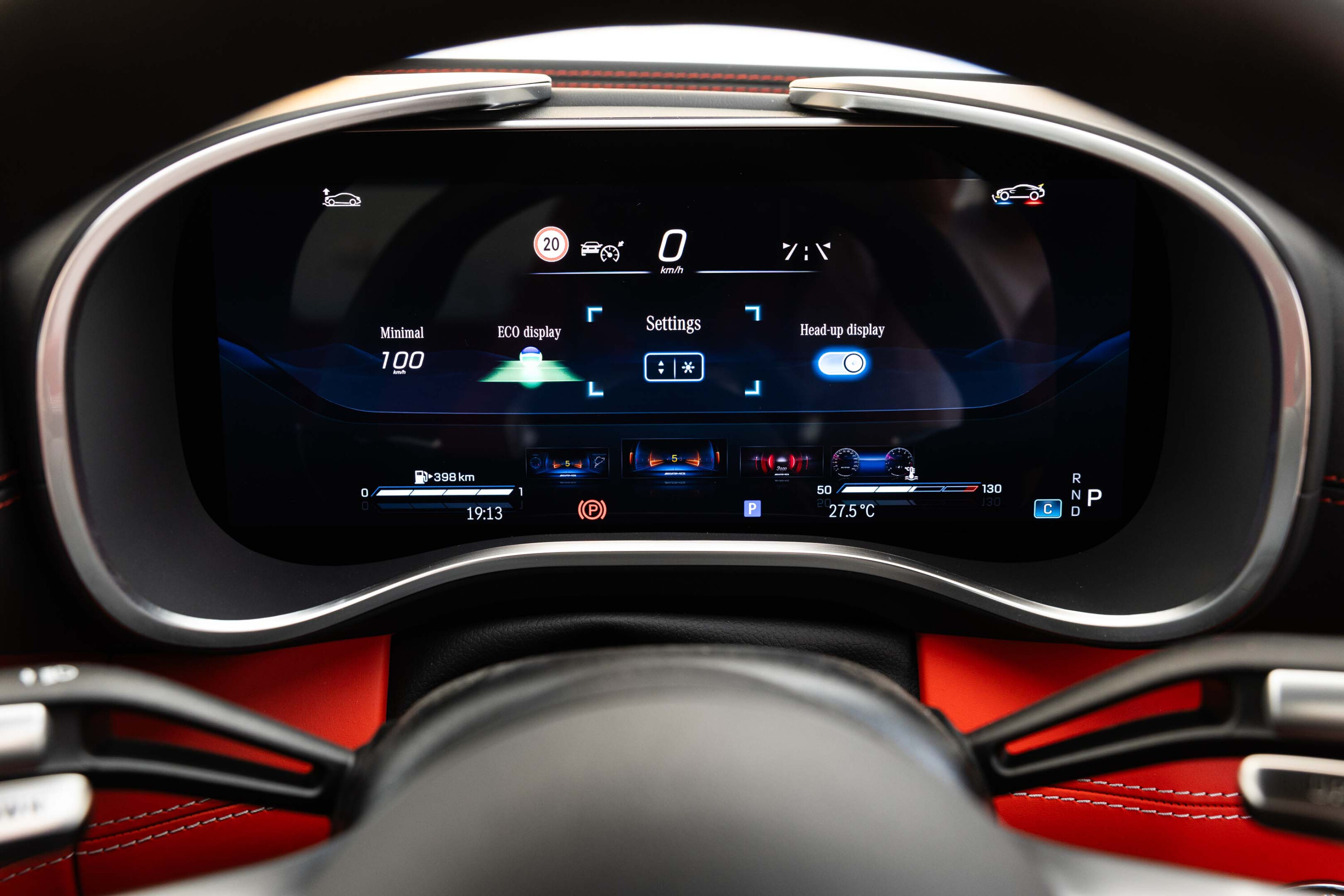
The steering wheel is densely packed with controls, with the now familiar pair of illuminated multi-function switches suspended from the lower horizontal spokes of the wheel. The driving position takes a little bit of getting used to, especially if you’re expecting the long reach of before.
The standard seats also sit you a few centimetres higher than perhaps is ideal, just robbing you of that last degree of snug intimacy that you look for when getting acquainted with a powerful sports coupe. Should you want a snugger feel, swap the standard multi-contour front seats for the option of the racier AMG Performance seats.
There’s a lot to take in. The drive modes can be switched between Snow, Individual, Comfort, Sport, Sport+ and Race, then there are the AMG dynamics settings which shuttle between Basic, Advanced and Master. There’s the ability to open or close the exhaust butterflies for a throatier sound, the dampers are adaptive, and there’s a three-stage traction control system.
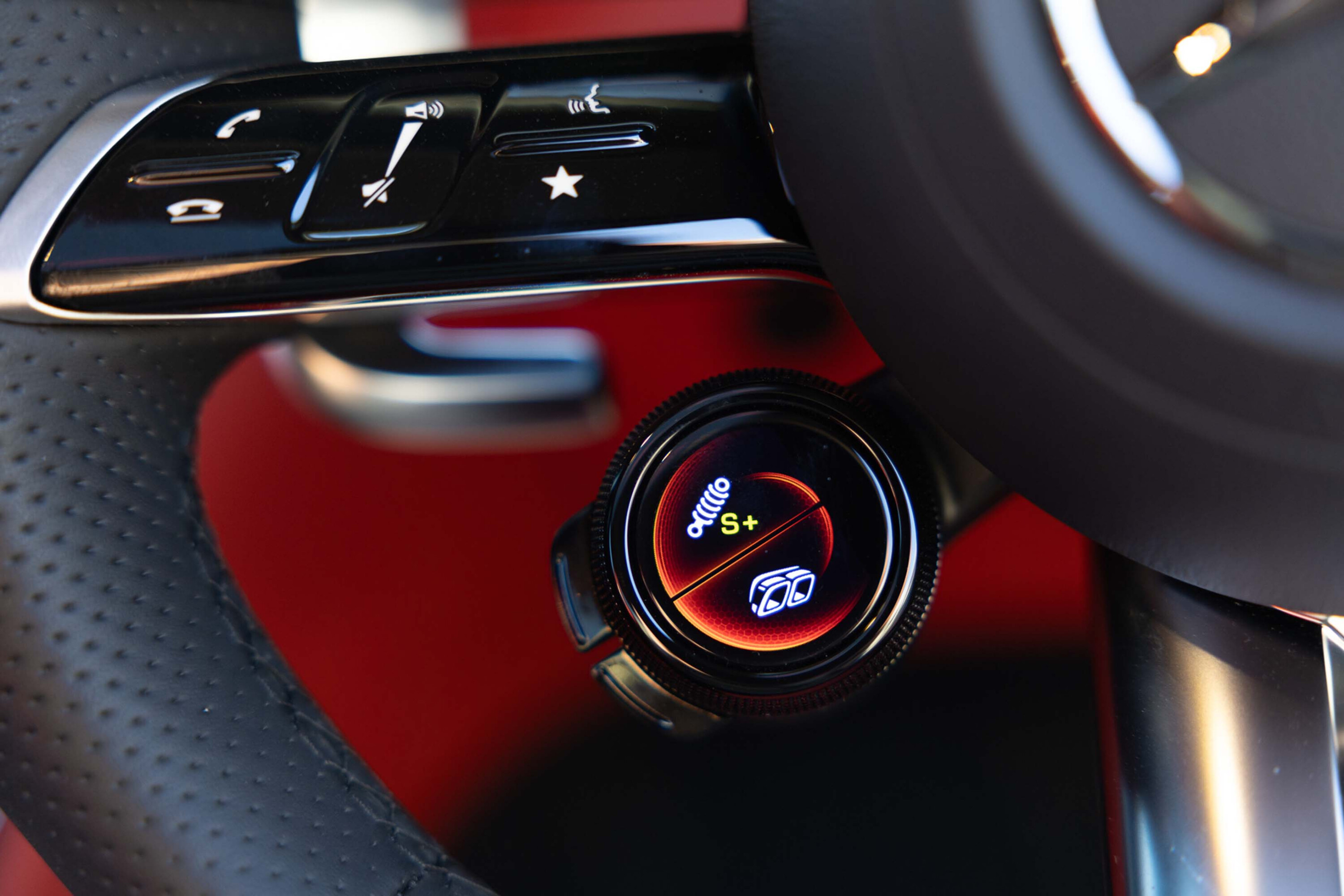
In other words, this isn’t the sort of car you’re going to get the hang of in an afternoon. Fortunately the drive modes seem sensibly calibrated. There’s not a great deal of difference between Comfort and Sport, the latter just giving the feeling of added dynamism without asking too much of the driver.
Click through to Sport+ and the car feels far more purposeful. It never feels overtly all-wheel drive, with a maximum of 50 percent of drive can be diverted to the front treads. Even when provoking it, torque steer is noticeable only by its absence. The four-wheel steer system gives it a feeling of agility when diving into an apex, but it never feels flighty or that there’s a response issue between axles. It also serves to slyly mask that extra weight.
Unlike its predecessor, which featured a transaxle, this generation of GT features a more conventional gearbox slung at the back of the engine. That’s helped with packaging the rear seats and the luggage bay, but it also means that the old 47:53 weight distribution now morphs into a more nose heavy 54:46.
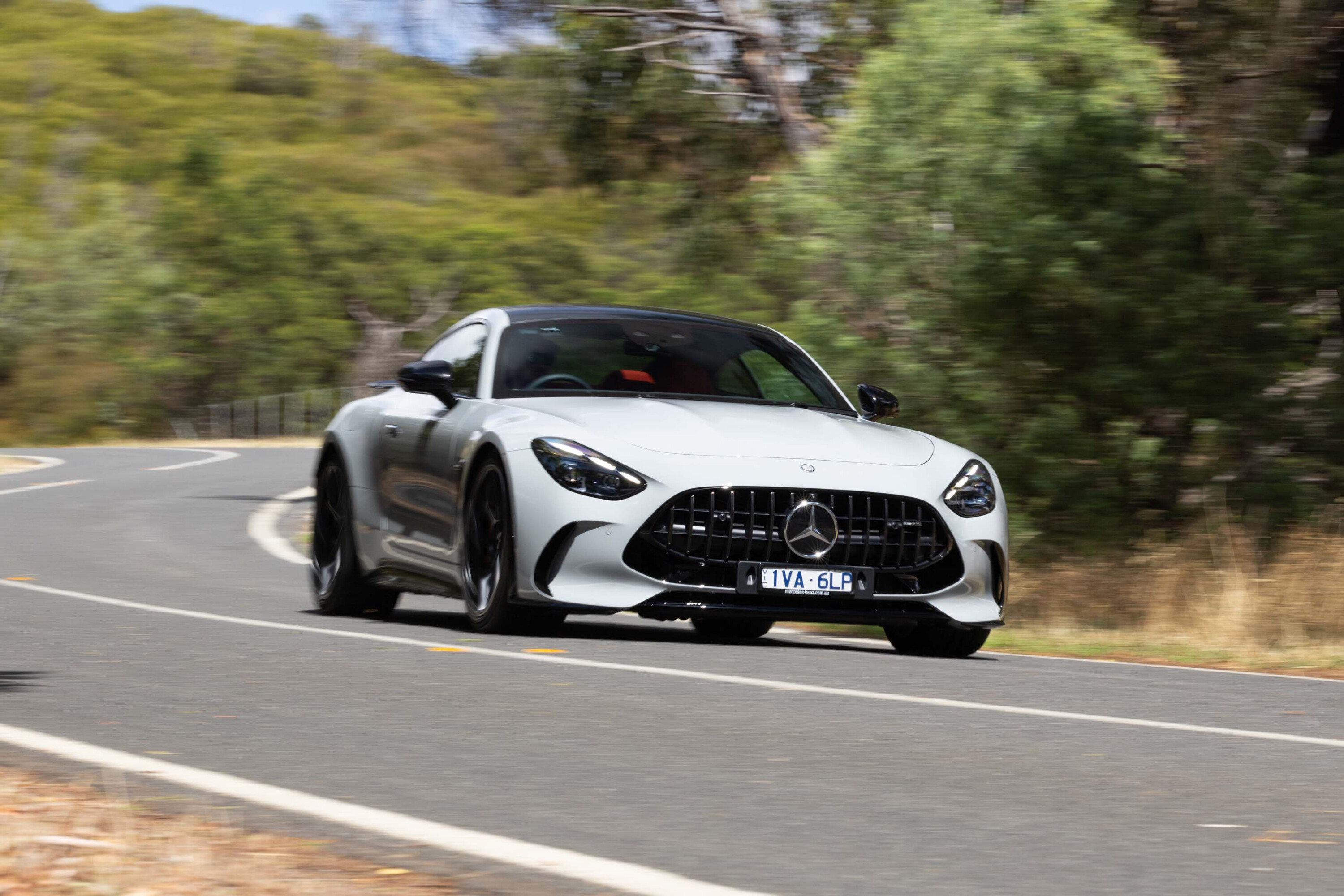
I don’t mind that too much, as the extra weight removes the occasionally spooky feeling of aloof remoteness from the front end that sometimes afflicted the old car. This one always feels engaged. AMG has worked wonders at combining the weight distribution with a quick steering ratio and the all-wheel drive system to really allow you to build confidence. On road that translates into being able to engage more throttle, earlier in a corner. It’s a very effective ground coverer.
The gearbox software helps. It’s always the sign of great transmission mapping when you find yourself leaving the paddle shifters alone, the software able to accurately predict when to snick up or bang down through the gears and in Sport+ you’ll very rarely find yourself plucking at the shift tabs yourself to instruct the nine-speed auto. When you want it to, it’ll power in gearchanges with real aggression.
The 4.0-litre twin-turbo V8 engine is a known quantity, but familiarity doesn’t really dim our enthusiasm for it. On a decent stretch of road, it’s genuinely thrilling to extend the engine, basking in the resolve of its unapologetic internal combustion.
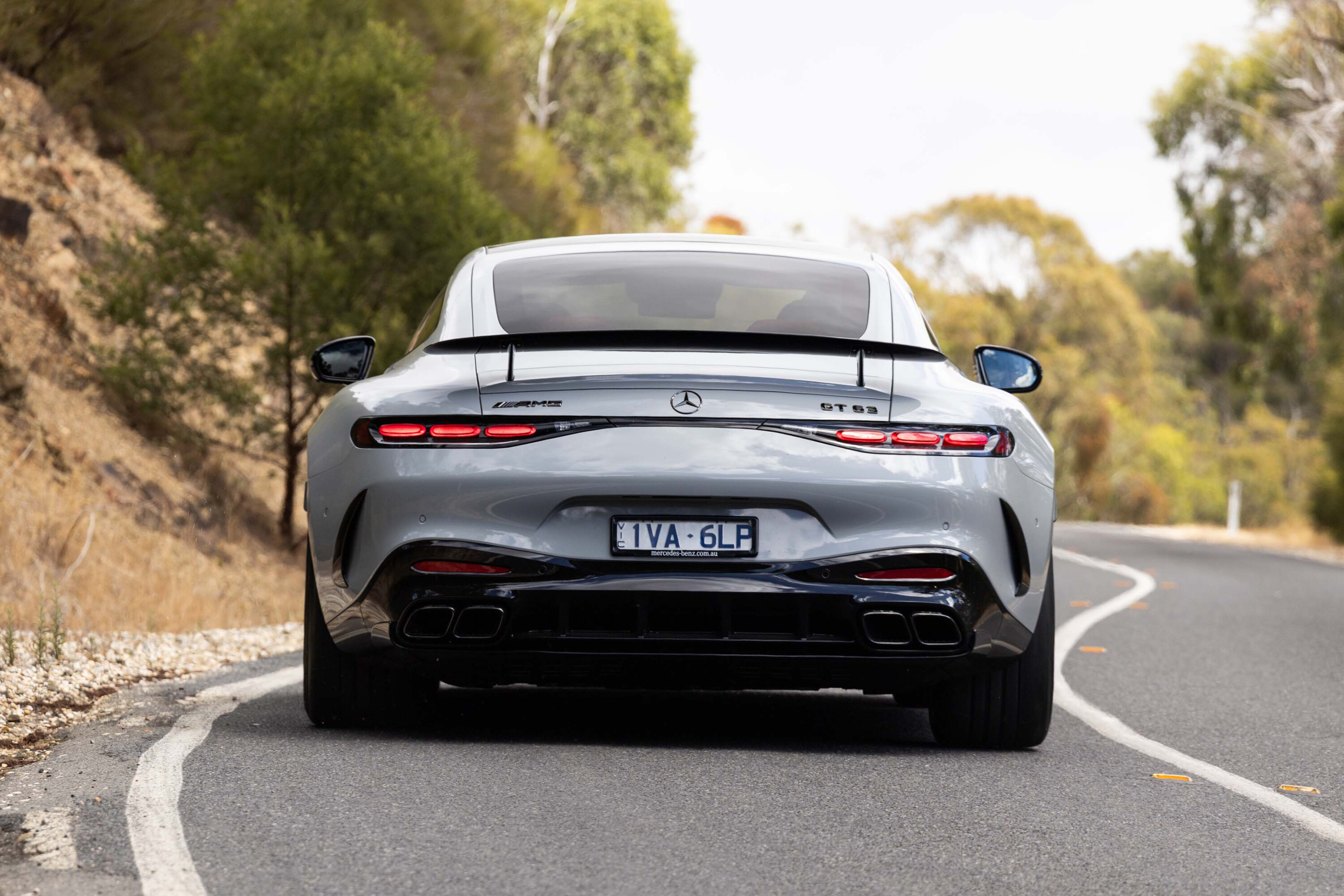
It’s properly quick too, demolishing 0-100km/h in 2.9 seconds. Yes, you can quite happily drive on the torque response, but to clatter towards the redline feels gloriously impish and it’s addictive. Therein lies the triumph of this car.
It’s a common refrain that so many modern cars make going fast feel rather antiseptic. By contrast the AMG GT bucks and shimmies as you fire through the ’box, it crackles and bellows. You’ll feel like a hero right up until that moment that you glance at the speedo, and the number is surprisingly modest. Perhaps the way it should be. One suspects it’s a bit of clever artifice because gather everything up and drive it in a very ‘correct’ manner and there’s real talent in this chassis. The GT certainly feels more like AMG home turf than their work on the SL.
Want more aggression? Wait, and save, for the AMG GT 63 Pro, which features a little more power and a lot more aggressive aero. Its 420mm carbon ceramic brakes also help, but it’s worth bearing in mind that while many global markets don’t get a composite braking system as standard on their GT 63 models, Australia does. And it works brilliantly.
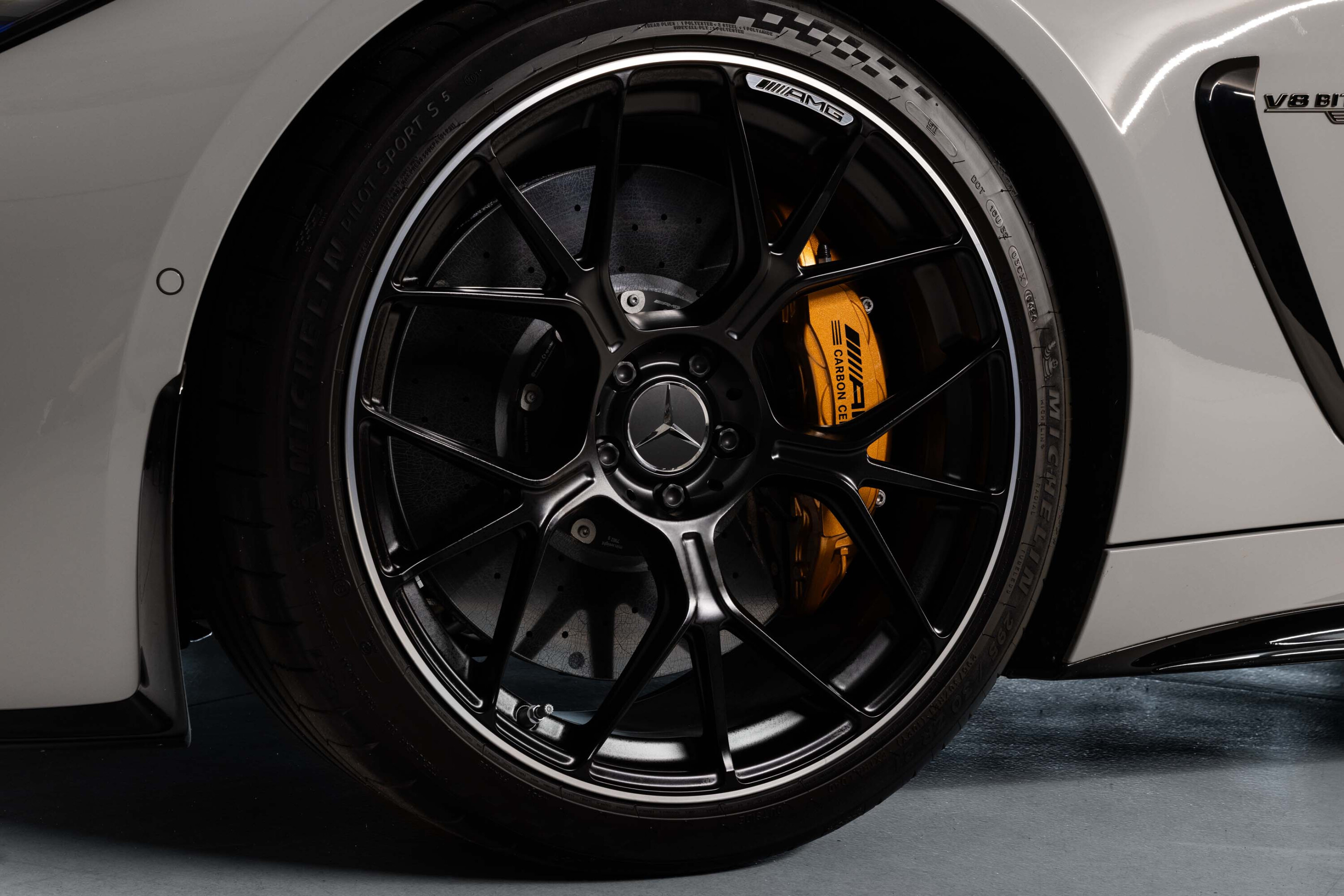
The GT 63 works as a gran turismo car very well. No, it’s not a truly sybaritic mile muncher like a Bentley Conti GT, but there’s a rangy suppleness to the ride in Comfort that is easy to live with. Likewise, there’s a massive boot. Pop the electric tailgate and there’s 321 litres of luggage space on offer.
There’s a button to drop the rear seats from the luggage bay, extended luggage space to 675 litres. Those rear seats feature ISOFIX child seat mounts but, because of the swooping tail, those seats are best reserved for kids who have grown out of child seats but are smaller than about 150cm. For most people, the rears will be used to chuck a bag or two.
You also get a quality Burmester stereo, a glass panoramic roof with manual shade, some well-hidden massage seat functions, a head-up display and wireless Apple and Android with a wireless charging pad. A front lift system also takes the sweat out of negotiating city centres, with 41mm of extra chin clearance at the touch of a button.
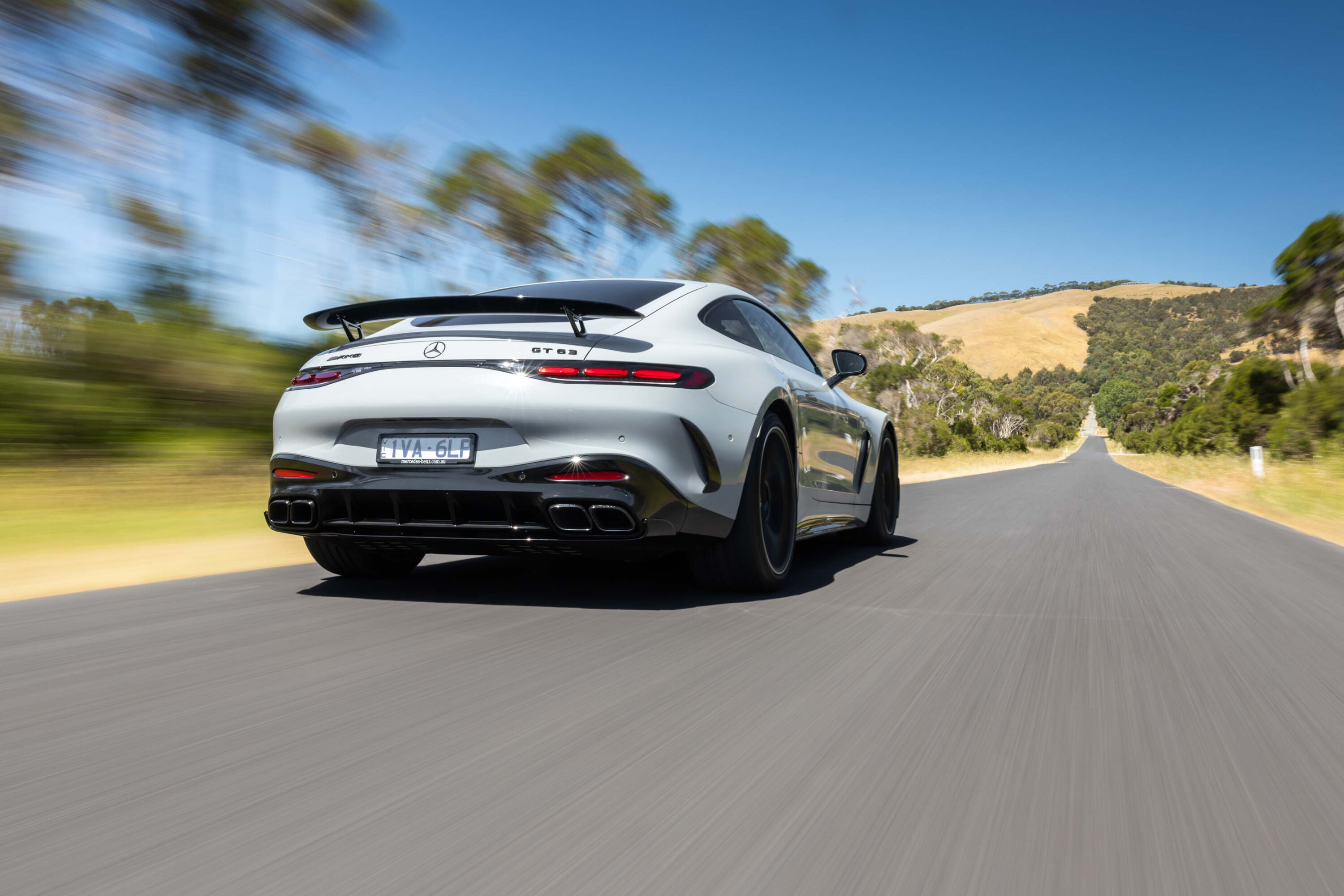
And yes, you can set it to remember the GPS coordinates for where the lift was engaged so that it does it without prompting next time.
Materials quality is, for the most part, good, and there’s a real sense of occasion in the AMG GT’s cabin. But then there needs to be. At $370,400, it handily undercuts the $401,300 Porsche 911 Carrera 4 GTS but start loading it up with the Night, Night II, Exterior Carbon or AMG Aerodynamics packages (not to mention the individualised Manufaktur options) and that price will start to creep towards blue bloods like the Ferrari Roma and the Aston Martin V8 Vantage.
On the plus side, you won’t need to jump through quite so many undignified hoops if you want your name on the registration document, servicing and ownership is a relatively straightforward proposition and it’s a car that you’ll want to drive rather than keep squirrelled away in a dehumidified garage.
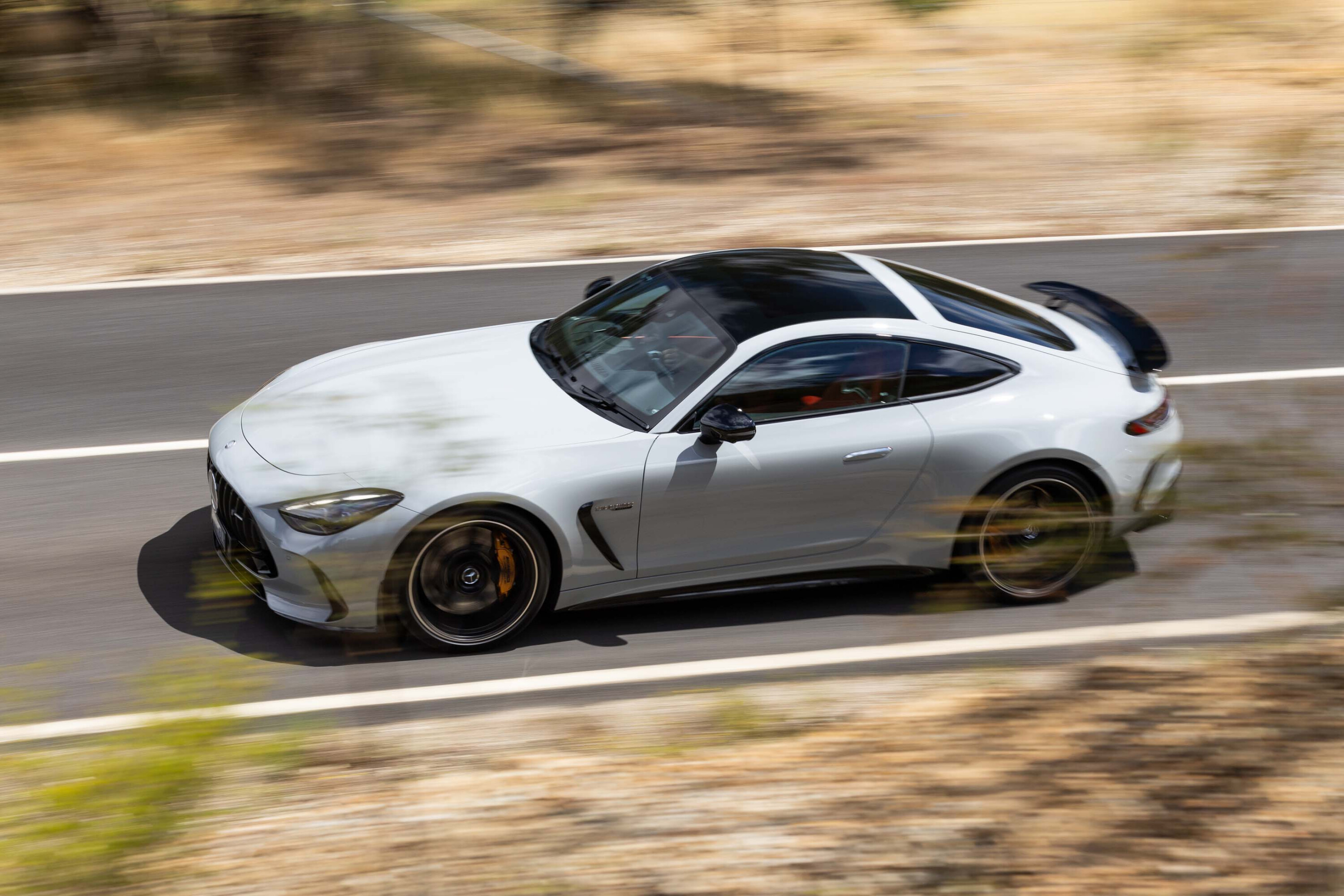
For more people, most of the time, it’s a markedly better car than its predecessor and I honestly didn’t think I’d conclude my review with that.
It’s certainly more useable on a daily basis. Does it cede a little of the drama of its predecessor as a result? Maybe, but that seems acceptable for a car that you’ll use and enjoy on far more days of the year. That it also delivers a dynamic package that also has its forebear covered seals the deal. In absolute terms, it’s now probably a more capable all-rounder than a 911.
It’s longer-legged, it’s got a bigger boot and there’s more bandwidth in its ride quality. But does it possess the same magic, the same ultimate reward when the traffic thins and your favourite road snakes ahead of you? That’s a tougher question to answer. But if you’re bored of 911s, add it to the shortlist. Heck, add it to the shortlist even if you’re not.




